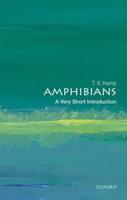Publisher's Synopsis
Every year, countless juvenile Pacific salmon leave streams and rivers on their migration to feeding grounds in the North Pacific Ocean and the Bering Sea. After periods ranging from a few months to several years, adult salmon enter rivers along the coasts of Asia and North America to spawn and complete their life cycle. Within this general outline, various life history patterns, both among and within species, involve diverse ways of exploiting freshwater, estuarine, and marine habitats. There are seven species of Pacific salmon. Five (coho, chinook chum, pink, and sockeye) occur in both North America and Asia. Their complex life histories and spectacular migrations have long fascinated biologists and amateurs alike.
Physiological Ecology of Pacific Salmon provides comprehensive reviews by leading researchers of the physiological adaptations that allow Pacific Salmon to sustain themselves in the diverse environments in which they live. It begins with an analysis of energy expenditure and continues with reviews of locomotion, growth, feeding, and nutrition. Subsequent chapters deal with osmotic adjustments enabling the passage between fresh and salt water, nitrogen excretion and regulation of acid-base balance, circulation and gas transfer, and finally, responses to stress.
This thorough and authoritative volume will be a valuable reference for students and researchers of biology and fisheries science as they seek to understand the environmental requirements for the perpetuation of these unique and valuable species.











